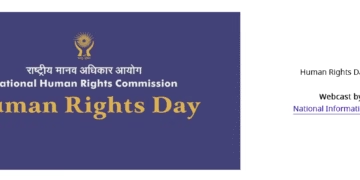“We’re seeing a concerning lack of progress in stopping the spread of sexually transmitted infections worldwide,” said Dr Peter Salama, Executive Director for Universal Health Coverage and the Life-Course at WHO. “This is a wake-up call for a concerted effort to ensure everyone, everywhere can access the services they need to prevent and treat these debilitating diseases.”
Published online by the Bulletin of the World Health Organization, the research shows that among men and women aged 15–49 years, there were 127 million new cases of chlamydia in 2016, 87 million of gonorrhoea, 6.3 million of syphilis and 156 million of trichomoniasis.
These STIs have a profound impact on the health of adults and children worldwide. If untreated, they can lead to serious and chronic health effects that include neurological and cardiovascular disease, infertility, ectopic pregnancy, stillbirths, and increased risk of HIV. They are also associated with significant levels of stigma and domestic violence.
Syphilis alone caused an estimated 200 000 stillbirths and newborn deaths in 2016, making it one of the leading causes of baby loss globally.
STIs remain a persistent and endemic health threat worldwide
Since the last published data for 2012, there has been no substantive decline in either the rates of new or existing infections. On average, approximately 1 in 25 people globally have at least one of these STIs, according to the latest figures, with some experiencing multiple infections at the same time.
STIs spread predominantly through unprotected sexual contact, including vaginal, anal and oral sex. Some—including chlamydia, gonorrhoea, and syphilis—can also be transmitted during pregnancy and childbirth, or, in the case of syphilis, through contact with infected blood or blood products, and injecting drug use.
STIs are preventable through safe sexual practices, including correct and consistent condom use and sexual health education.
Timely and affordable testing and treatment are crucial for reducing the burden of STIs globally, alongside efforts to encourage people who are sexually active to get screened for STIs. WHO further recommends that pregnant women should be systematically screened for syphilis as well as HIV.
All bacterial STIs can be treated and cured with widely available medications. However, recent shortages in the global supply of benzathine penicillin has made it more difficult to treat syphilis. Rapidly increasing antimicrobial resistance to gonorrhoea treatments is also a growing health threat, and may lead eventually to the disease being impossible to treat.
Expanding access to prevention, testing and treatment
WHO generates estimates to assess the global burden of STIs, and to help countries and health partners respond. This includes research to strengthen prevention, improve quality of care, develop point-of-care diagnostics and new treatments, and generate investment in vaccine development.
More data was available from women than men to generate these global estimates, and STI prevalence data remains sparse for men globally. WHO is seeking to improve national and global surveillance to ensure availability of reliable information on the extent of the STI burden worldwide.
Published in the WHO Bulletin as an ‘online first’, the data provides the baseline for monitoring progress against the Global Health Sector Strategy on STIs, 2016–2021. The strategy, adopted by the World Health Assembly in May 2016, proposed rapid scale-up of evidence-based interventions and services to end STIs as a public health concern by 2030.











































